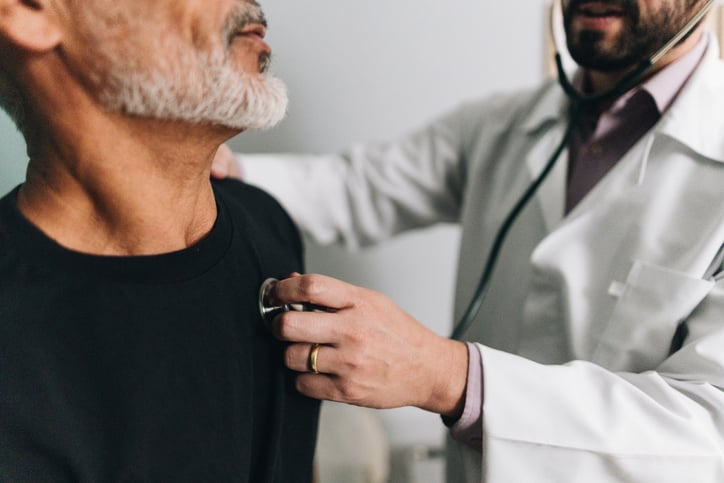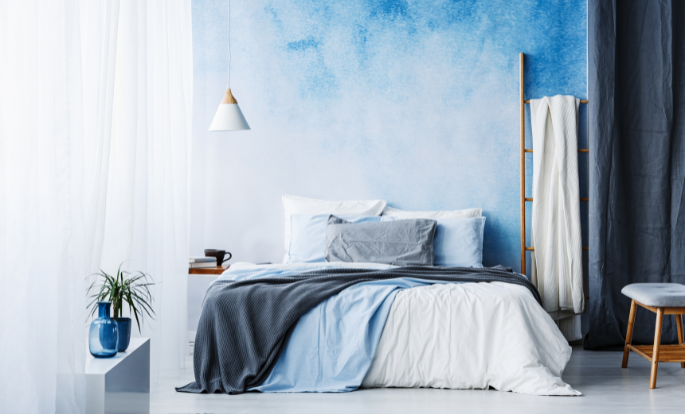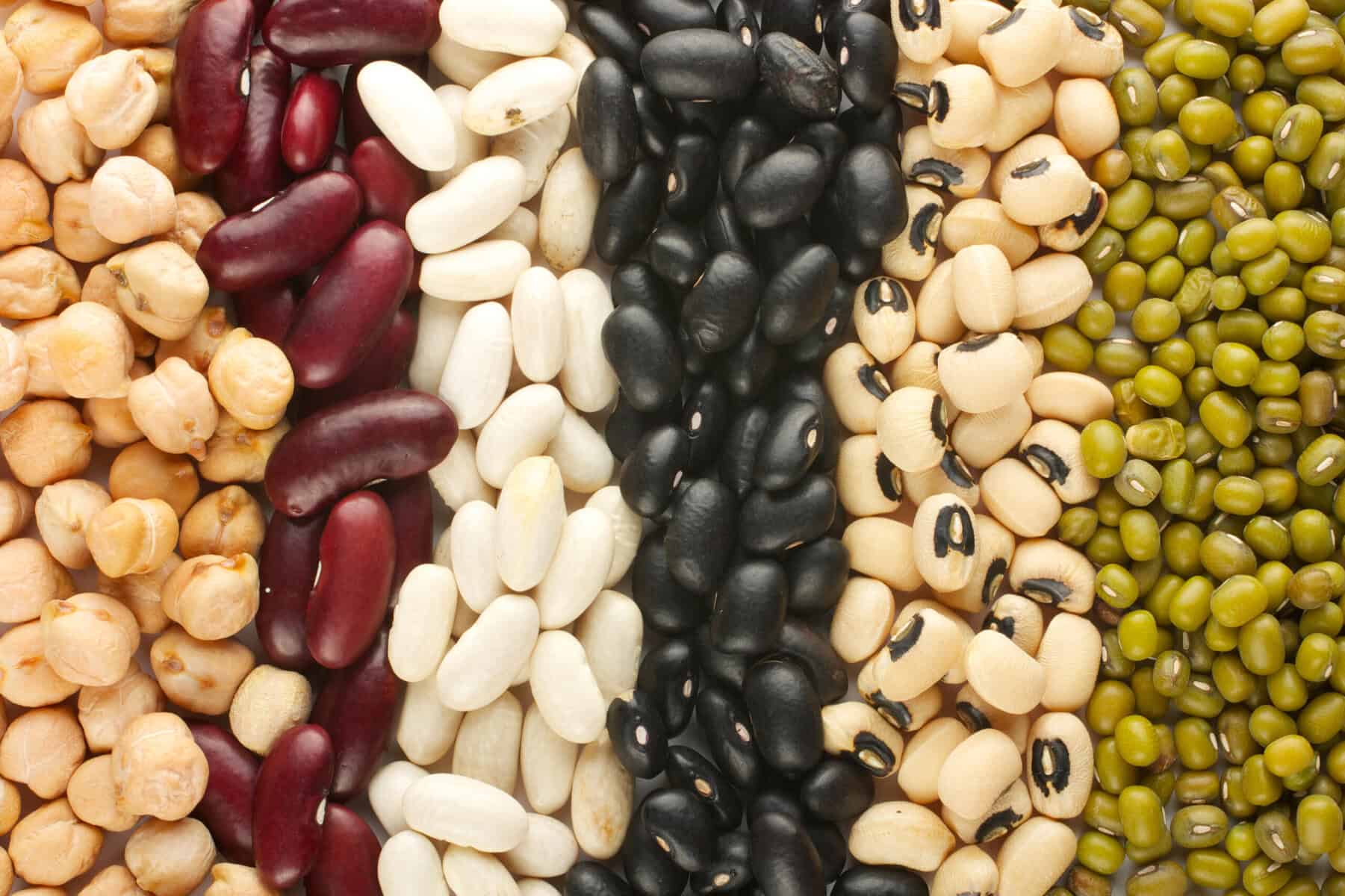 Author: Hannah FryeMay 22, 2023
Author: Hannah FryeMay 22, 2023 mbg Assistant Beauty EditorBy Hannah Fryembg Assistant Beauty EditorHannah Frye is the Assistant Beauty Editor at mindbodygreen. She has a B.S. in journalism and a minor in women’s, gender, and queer studies from California Polytechnic State University, San Luis Obispo. Hannah has written across lifestyle sections including health, wellness, sustainability, personal development, and more.Hair typeHair type quizType 1Type 2 (a, b & c)Type 3 (a, b & c)Type 4 (a, b & c)PorosityFAQImage by ohlamour studio / StocksyMay 22, 2023Our editors have independently chosen the products listed on this page. If you purchase something mentioned in this article, we may earn a small commission.
mbg Assistant Beauty EditorBy Hannah Fryembg Assistant Beauty EditorHannah Frye is the Assistant Beauty Editor at mindbodygreen. She has a B.S. in journalism and a minor in women’s, gender, and queer studies from California Polytechnic State University, San Luis Obispo. Hannah has written across lifestyle sections including health, wellness, sustainability, personal development, and more.Hair typeHair type quizType 1Type 2 (a, b & c)Type 3 (a, b & c)Type 4 (a, b & c)PorosityFAQImage by ohlamour studio / StocksyMay 22, 2023Our editors have independently chosen the products listed on this page. If you purchase something mentioned in this article, we may earn a small commission.Examining your personal set of tresses—from straight strands to kinky coils—isn't just a fun fact to have in your back pocket or a defining feature to gab about with your hairstylist. It's actually crucial for starting a hair care routine.
In fact, it's often been said that knowing your hair type is essential to finding the best products for you in a vast market of hair care. To find out your specific hair type and what care tips to follow, keep reading.
Advertisement
This ad is displayed using third party content and we do not control its accessibility features.Why hair type matters
It's a similar venture to knowing your true skin type—those with oily, acne-prone skin might reach for water creams and purifying actives, while those with chronically dry skin fare best with thick, buttery confections topped with an oil.
The same goes for tending to your hair: A curly girl with type 4b strands wouldn't opt for the exact same styler as someone who sports 2c waves. We digress.
Of course, you can have a hybrid of multiple textures (in fact, most people do!), so figuring out your true hair type isn't so cut and dried.
It may take some personal guesswork to figure out what methods work for your specific locks, but identifying your general strand pattern—say, through a hair-type quiz—is step one on the journey.
We should also note that this quiz doesn't take density, porosity, and strand thickness into account—while those do tend to associate with certain hair types, it's not the be-all and end-all.
For instance, anyone can have coarse or fine strands, regardless of whether their hair dries coiled or stick-straight. For the purposes of this quiz, we're sticking to tried-and-true hair types, but we'll touch on porosity after.
What's more, your overall hair type (type 1, type 2, type 3, or type 4) will guide your search for products more than the ultra-specific a, b, and c. We know this sounds confusing at first, but take the quiz below and keep reading for more context on your strands.
The ultimate hair type quiz
What is your hair type?
You have type 4c hair.
You have a mix of tight springs and Z-shapes, and your hair looks lush and dense. Although, your hair is very fragile and prone to breakage, so loading up on moisture is key.
Styling tips: Invest in a hydrating conditioner and a hair oil for whenever you're feeling dry. Try layering methods (like LOC) to seal in moisture and prevent shrinkage. You may also want to apply your products as soon as you step out of the shower (some even like to apply right after rinsing out conditioner), when the hair is least prone to frizz.
You have type 4b hair.
Your hair resembles a zig-zag pattern, with sharp twists and turns. Your hair is also pretty fragile and prone to shrinkage, so you'll want to load up on moisture, here.
Styling tips: Try layering methods (like LOC) to seal in moisture and prevent shrinkage (essentially, layer on occlusives over emollients to lock it all in). Invest in a hydrating conditioner, as well as a hair oil for whenever you're feeling dry.
You have type 4a hair.
You have springy, tight curls, perhaps resembling corkscrews. While your hair retains moisture better than the other type 4's, it's still prone to some dehydration.
Styling tips: Like the other type 4's, it's all about moisture. Invest in a hydrating conditioner targeted specifically for dry hair, and coat on a moisturizing oil whenever your tresses are feeling parched, wet or dry.
You have type 3c hair.
Your hair features tight loops and spirals—think of the spring inside of a pen. Since the curl pattern starts at the root, volume is not your issue here. Your curls are lush and defined, but they're also prone to breakage and lack moisture, so sealing in hydration is crucial.
Styling tips: Focus on products that will add hydration and seal in water, as well as stylers that offer some hold and definition. You'll want to set the curls when dripping wet to lock in moisture and keep those loops shiny and springy.
You have type 3b hair.
Your hair has tighter ringlets—think spirals with a bit more spring. This hair type also tends to run dry, so keeping the strands moisturized is key.
Styling tips: Since the ringlets run dry, you'll want to spritz on refreshers between conditioning sessions and stay away from sulfates and dry detergents at all costs. Find yourself some moisturizing leave-ins, oils, refreshers, and defining creams, and lock in the hydration.
You have type 3a hair.
You have loose, medium-barrel curls. They react to the elements quite easily and are pretty prone to dryness, but treat them right and they'll stay defined and shiny.
Styling tips: To define those curls, find a good, moisturizing styling cream, serum or gel that gives you the right amount of hold. You might want to focus on flatter areas first (while the hair is wet) as the springier ringlets can typically hold their own.
You have type 2c hair.
Your hair has defined waves, perhaps resembling the letter S. You may also have a mix of S-shaped waves and full-on curls (most 2c's do!).
Styling tips: Look for products that offer light hold, but allow for some movement. Texture sprays and mousses are your friends, here, as are lightweight stylers to tame frizz (this hair type can be frizz-prone).
You have type 2b hair.
Your hair still lies flat at the root, but has some movement towards the bottom. It's still rather easy to manipulate wit hot tools, but you fall a little on the wavier side.
Styling tips: Similar to 2a hair, lighter milks and serums are your friends. If you're looking for more volume, try styling with a light-hold mousse and follow up with texture spray. If you're just using serums and leave-ins, don't apply them at the root (this can weigh down the strands).
You have type 2a hair.
While closer to straight than curly, your hair does have a slight bend. It typically lays flat at the root, then curves towards the bottom.
Styling tips: Reach for lighter milks and serums, as too-heavy oils and creams can weigh down the strands (keep them away from the root as well). If you're looking for more volume, try styling with a light-hold mousse and follow up with texture spray.
You have type 1 hair.
Straight hair is a texture, and it's yours! There's little to no bend in your strands, and it can get greasy fast—it's easy for sebum to travel from root to shaft.
Styling tips: Typically, your hair has the tendency to lay flat, so volumizing stylers and sprays are your friends. You may want to avoid any heavyweight oils and butters, as those can turn your strands greasy in a snap. Perhaps add in your stylers after towel-drying your hair a bit—this can provide more volume and a lift at the root.
Which of these resembles your hair most?
You’re just stepping out of the shower. How much time do you let your hair air-dry before applying stylers?
What are you looking for most in your hair care products?
Do you co-wash?
When do you detangle your hair?
Generally, how often do you shampoo your hair?
Advertisement
This ad is displayed using third party content and we do not control its accessibility features.Understanding your hair type
We've covered most of the hair types on mindbodygreen before, but below we'll provide some general information for each one along with links to our full user-friendly guides.
Type 1 hair
You'll notice that the other hair types (2, 3, and 4) have a range of more specific types within them, labeled a, b, and c. However, type 1 hair is different—straight is straight. So if you find your hair dries with a slight wave, you're probably a true type 2a.
The cardinal rules for tending straight hair are as follows: Don't use super-heavy products, shampoo regularly (as you're more prone to oily roots), and remember that volumizing products are going to be your best friend.
Type 1 hair products
amika
Normcore Sulfate Free Shampoo
$23Shop now Shop now
Shop nowCeramonia
Guava Hydrating Leave-In Conditioner
$24Shop now Shop now
Shop nowhOURS
Tousle And Shine Spray
$27Shop Now Shop Now
Shop NowType 2a
 Image by mindbodygreen creative
Image by mindbodygreen creative Advertisement
This ad is displayed using third party content and we do not control its accessibility features.Type 2a hair falls right in between straight and wavy. As Meerika Khanna, an Ayurvedic hair wellness expert and founder of Rthvi, previously told mbg, "2a hair type is usually flat at the top and slightly wavy at the bottom."
This hair type will struggle with dryness at the ends but may be prone to greasy strands at the root (kind of like combination skin types). In general, stick with every-other-day washes at most to prevent drying out your waves but still keep your scalp clean.
Read: A Full Guide To 2A Hair Type: Products, Styling Tips & More From The Pros
Type 2b
2b looks like relaxed waves and often has a very defined S-wave shape—even without the need for styling. While the roots are fairly straight, if you have 2B hair, you'll find that your wave pattern makes an appearance starting at the mid-length and continues through to the ends.
Unlike type 1 and 2a hair, those with type 2b strands should probably skip the brush detangling method and opt for a wide-toothed comb instead. Try plopping your hair to enhance your wave definition, and prioritize frequent trims to avoid extra frizz.
Read: Type 2b Hair: Texture, Styling Tips From The Pros & Product Recommendations
Advertisement
This ad is displayed using third party content and we do not control its accessibility features.Type 2c
This hair type comes with big waves, but they never quite form into an S curl—at least not consistently. Even though it's not technically a "curl," it does require similar care to type 3 hair, as it's more dry than types 2a and 2b.
Because the hair is in between a wave and curl, styling products like curl creams and gels will be helpful for defining your unique shape. This hair type can also benefit from the diffuser drying method should you want to style your natural wave and add some volume.
Read: A Full Guide To Type 2c Hair: Tips & Product Recs
Shop type 2 hair products
dae
Monsoon Moisture Milk Hydrating Shampoo
$28Shop now Shop now
Shop nowAct+Acre
2% Squalene Anti-Frizz Leave In Conditioner
$48Shop now Shop now
Shop nowBriogeo
Superfoods™ Banana + Coconut Hydrating Soft Wave Texture Spray
$25Shop now Shop now
Shop nowType 3a
 Image by mbg Creative
Image by mbg CreativeAdvertisement
This ad is displayed using third party content and we do not control its accessibility features.Now we're entering the true curly scene. This hair type has a clearly defined curl pattern—except it's more relaxed. It will show an "S" shape, but one that's a bit longer and looser than type 3b and above.
Unlike type 4s, 3a hair doesn't always require manipulation to create a defined curl pattern. And while frizz and dryness are a common concern (which is true of all type 3s), creating definition usually isn't an issue. However, as with all wavy, curly, and kinky-coily hair types, 3a's will usually have to pay attention to moisture retention to prevent frizz and dryness.
Read: Type 3a Hair: Hair Care Tips, Products & Styles For The Lush, Curly Locks
Type 3b
3b hair is tighter than 3a, and generally has tons of volume. "Each curl is usually no bigger than a highlighter or a marker, even across different hair textures," stylist Cassandra Olivia previously told mbg. If your curls are larger than a marker, then you probably fall into the 3a category instead.
This hair type needs tons of moisture, so consider swapping out your conditioner for a hydrating hair mask every other wash (or every wash, if needed). 3b curls are highly delicate, so tread lightly when styling.
Read: A Full Guide To Type 3b Hair: Tips + Product Recs
Type 3c
This hair type is often categorized as a classic corkscrew curl. While strict definitions say that this hair type has a curl circumference of a pencil or straw, this isn't always accurate. It's also common for 3c hair types to have an array of 3a and 3b strands sprinkled in, so don't be surprised by the diversity.
Since you want to preserve your curls but you don't want to wash them daily, try "pineappling" before bed. This simply means that you're putting your hair into a high bun (think a top knot but not so tight).
Read: Type 3c Hair: What It Is, How To Care For It & The Best Products To Use
Shop type 3 hair products
Leaf + Flower
CBD Instant Curl Defining Cream
$34Shop now Shop now
Shop nowShaz + Kiks
Scalp+Hair Prewash
$40Shop now Shop now
Shop nowHairstory
New Wash Original
$42Shop now Shop now
Shop nowType 4a
 Image by mindbodygreen creative
Image by mindbodygreen creative Type 4a hair is formally defined as being densely packed coily hair. When fluffed out, it can look very full. Type 4a hair tends to have a clear "S" pattern, which creates miniature coils. The hair is referred to as dense, with springy coils.
This hair type is typically more dry than type 3s, which means moisturizing products are the way to go. Don't be afraid to add a leave-in conditioner after every rinse—your hair will thank you for the extra drink.
Read: What Is 4a Hair? What It Looks Like, How To Care For It + Product Recs
Type 4b
4b hair looks like miniature curls. Celebrity hairstylist and Imbue Hair brand ambassador Michelle Sultan noted that 4b hair looks like "curl strands in the shape of a zigzag. [It] can be quite fluffy looking; it is less defined than that of 4a hair."
This hair type is particularly fragile, which means dry detangling should be kept to a minimum (if ever). Instead, be patient with your coils and only detangle them gently when your hair has conditioner in it—aka, in the shower before you dry your strands.
Read: 4b Hair: A Pro's Guide To What It Looks Like, The Best Products & Care Tips
Type 4c
4c hair has a spiral texture, but the spiral might look miniature. Folks with this hair type will see a great change in hair length when their natural coils are shining versus when they straighten or blow out their hair.
Considering that your hair comes out of your scalp, don't forget to show it some TLC. Monique Jackson, a stylist at GoodBody Salon, recommended regularly oiling or moisturizing your scalp. "Any oil that you apply to the scalp will travel to the rest of the hair [ensuring] needed moisture throughout the ends. You should be oiling your scalp at least once a day or as necessary...especially while wearing hair in protective styles."
Read: What Is 4c Hair? What It Looks Like, How To Care For It + Product Recs
Shop type 4 hair products
Mielle
Pomegranate & Honey Twisting Soufflé
$7Shop now Shop now
Shop nowPattern
Edge Control
$12Shop now Shop now
Shop nowBondiBoost
Curl Boss Frizz Fighting and Curl Defining Styling Cream
$28Shop now Shop now
Shop nowWhat about porosity?
Here's the thing: Hair type is just one factor. Even if you and your neighbor both have 3a hair, your porosity levels will change your routine as well. It may seem like a lot to keep track of, but there's a quick test for this as well, see below:
- You'll want to make sure you're testing on freshly shampooed and dry hair. If your hair or strands have buildup, it will affect the results of the test (as some hair products leave a coating on the strands, which will affect the porosity).
- Fill a clear glass of water. You'll want clear because you want to see what happens to your hair when you drop it in (your next step).
- Drop in the hair and see if it floats or sinks to the bottom. If it floats, you have low-porosity hair. If it sinks to the bottom, you have high. If it's somewhere in the middle you have medium or normal porosity.
For high-porosity hair strands, read this guide. For those that fall into the low-porosity category, see this one.
The takeaway
And there you have it—a quick quiz to help you find your hair type and some helpful information along with it. Do your best to follow hair care tips for your specific hair type, but know it's not the only factor that should guide your shopping and hair habits.
Up for another quiz? Find out your skin type here.
 Hannah Fryembg Assistant Beauty Editor
Hannah Fryembg Assistant Beauty EditorHannah Frye is the Assistant Beauty Editor at mindbodygreen. She has a B.S. in journalism and a minor in women’s, gender, and queer studies from California Polytechnic State University, San Luis Obispo. Hannah has written across lifestyle sections including health, wellness, sustainability, personal development, and more. She previously interned for Almost 30, a top-rated health and wellness podcast. In her current role, Hannah reports on the latest beauty trends, holistic skincare approaches, must-have makeup products, and inclusivity in the beauty industry. She currently lives in New York City.
Original Article










